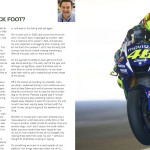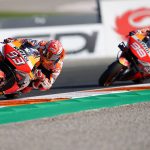The central lane between the back of the pitlane garages and the compact hospitality spaces for the manufacturers at the Sepang International Circuit is tree-lined and pleasantly inviting. The track is almost unique in this leafy park-like offering. The partially-shaded road is relentlessly busy with staff crossing between the two work hubs and fans and paddock guests hoping to ambush their favourite racer on the short traverse.
With its scheduling at the end of the intense MotoGP flyaway ‘triple’ there is a tangible feeling of anxiety with teams eager to start the long trip back to European bases. The vibe is more functional, faster and hurried.
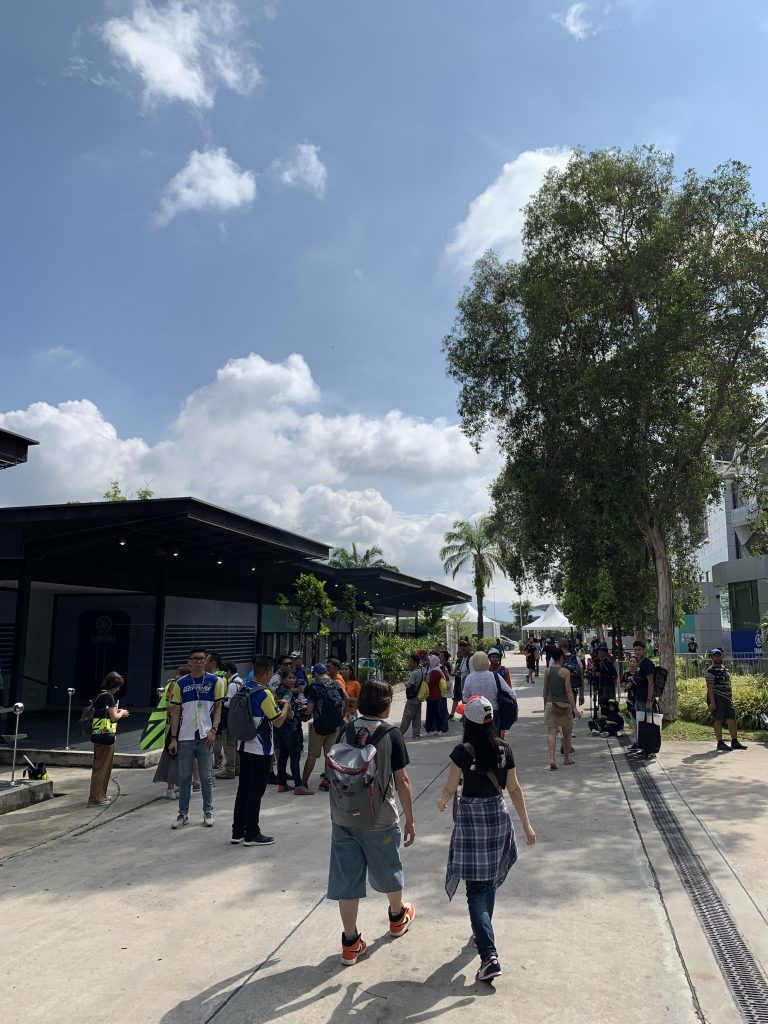
It’s quite a contrast to the ‘new term’ enthusiasm when the same personnel are gathered together at the same venue at the start of the year and for when Sepang holds a sense of mystery. Malaysia is typically the time when the curtains are thrown open on the light of another MotoGP year; the first pre-season test calls an end to the December-January winter blackout of track activity.
Along the row of hospitalities there were four riders inside bearing four different demeanours as MotoGP returned to Sepang for the eighteenth round of nineteen. Ducati’s Pecco Bagnaia would hold an expression of knowing relief but then awkward discomfort, Suzuki’s Joan Mir wears a mix of curious contentment, Yamaha’s Fabio Quartararo will flip wildly between concern, ecstasy and bewilderment while KTM’s Miguel Oliveira showed frustrated resignation.
Elite level sport is all about references: who is the best, the fastest, the strongest, the wisest, the hungriest. There are units of measurement in almost all aspects that relate to performance, (and away from the somewhat murky world of ‘grey matter’ that is the psychological element). Zeroing-in on Sepang and MotoGP, this Grand Prix and its eight-month distance from the pre-season test, is the only fixture where riders can bank on feeling and data as a set barometer for their personal progress.
Bagnaia would cease to become the reigning Moto2 World Champion thanks to Alex Marquez’s impressive consistency on Sunday. The 22 year old Italian came back to Malaysia having pocketed his best MotoGP classification a few days earlier in Australia with the year-old Pramac GP18. Bagnaia created a stir back in February with the second fastest time at the test and his first thorough run on the Desmosedici. Since then he’d occasionally caught the eye but would only muster three top ten results. His debut term had turned into something of a headscratcher but Bagnaia seemed more relaxed on Thursday as he explained that the overseas events in Thailand, Japan and Australia had helped him discover one of the complicated requisites for increasing his competitiveness.
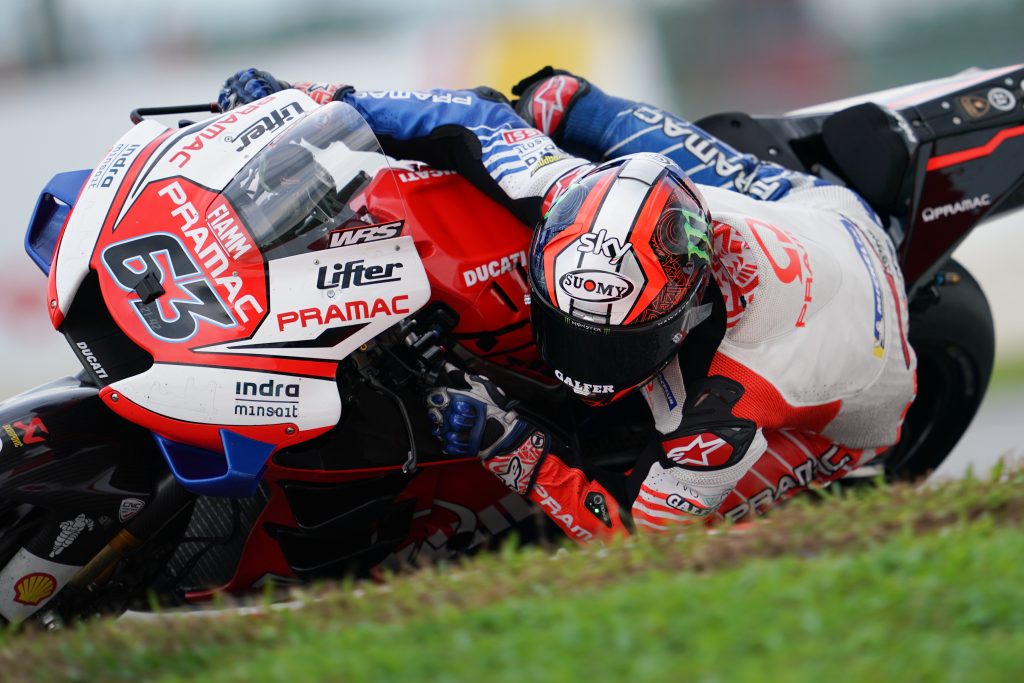
“Before Thailand we made a meeting with the chiefs at Ducati and we analysed the part where I was losing time,” he explained. “It was braking. Then in Thailand and Japan – two tracks where it is important to have good braking – we concentrated a lot on this. I understand [now] how to be better in this way, and it is not easy for me because I have a completely different riding style. For many years I have not used a lot of brake and used a lot of speed inside the corner and with MotoGP – and our bike – you need to be very different. You have to stop the bike more and use your braking style.”
That it took the better part of fifteen races for Bagnaia to unearth the key detail in his technique to grasp valuable tenths of a second is indicative of the slimmest margins in MotoGP. “I think it is difficult for every rider to change his style,” he continued “but it was one thing I had to do, and important to do it this year and not next year when I will have the factory bike. It is important to arrive prepared for the step for this bike, and to work on this in the last 3-4 races. I tried really hard to adapt my style with this bike but, in the end, we needed to make a compromise. Now it is more suitable.”
“Phillip Island was the first race where I had a free mind,” he admitted. “In Thailand and Japan it was difficult to concentrate because I had a lot of things on my mind and what I had to do. I was thinking ‘right, here I need to brake more’ and ‘now I need to wait’. It was not so easy but in Phillip Island everything came easier.”
By Saturday evening in Sepang Bagnaia’s face would be more strained. A fast crash at Turn 5 had left him with a painful foot and a constant reminder through a quiet race to twelfth place on Sunday that MotoGP can bite at any time. Indeed the perils of motorsport had already become transparent with the sad and very untimely passing of Asia Talent Cup star Afridza Munandar (‘star’ being a suitable description as the 20 year old Indonesian had claimed two wins and was in contention for the title) and at the venue where the MotoGP class endured its last fatality, exactly eight years before with Marco Simoncelli’s accident.
It was Marc Marquez who showed his true class as a world champion on Sunday in a personal, anecdotal and moving dedication to Munandar in the post-race press conference. His comments came as a complete contrast to the evident joy surrounding his brother’s championship success only three hours earlier and showed how racing/sport can mesh extreme thoughts and emotions. Marquez’s words were far more sincere and eloquent than a host of Moto3 riders who, even with the best intentions, wanted to show their solidarity but could not even recall Afridza’s name in their public declarations.
Miguel Oliveira was dealing with a different type of pain on Friday. Fortunate to escape relatively unscathed from his rapid get-off into Doohan corner at Phillip Island caused by the strong gusts of wind that plague the circuit (and have led for more calls by the paddock for the Grand Prix to be shifted to an F1-bothering slot earlier in the year), the Portuguese tried to ride his KTM RC16 through the first Free Practice. Sore hands and torn ligaments in his right shoulder meant it was a fruitless task and by Sunday morning in Europe he was under a surgeon’s knife in Austria.
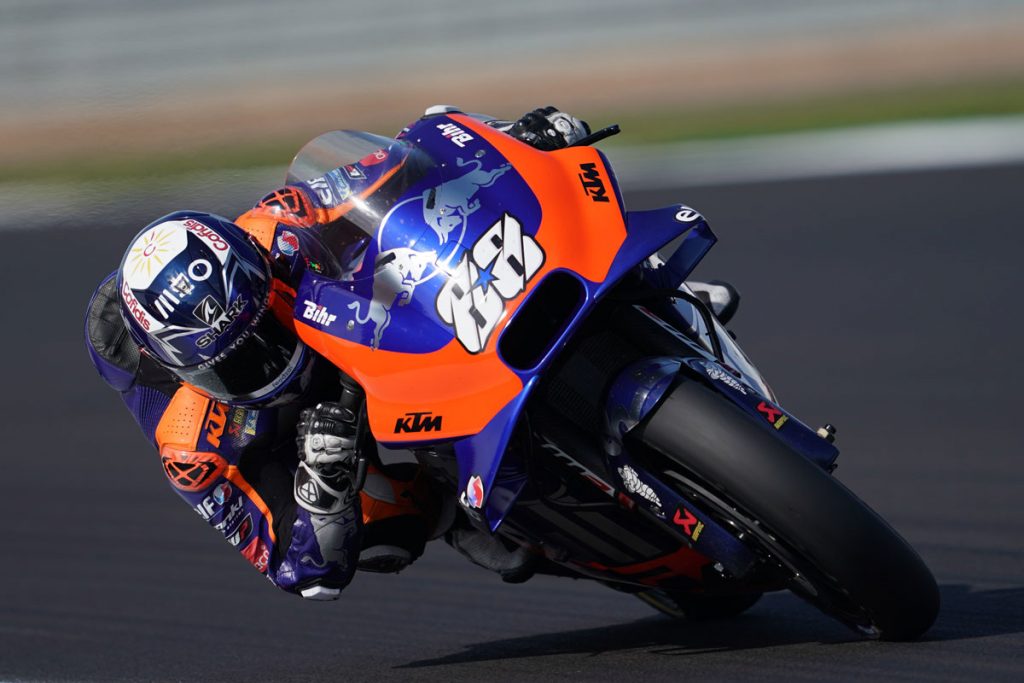
Of all the MotoGP rookies Oliveira is the most experienced Grand Prix campaigner and is renowned for his intelligence, fortitude and ‘get-on-with-it’ mentality. His plucky efforts to bother the top ten in the opening phases of 2019 with the young KTM led the manufacturer to activate his contract clause for 2020 by the third round. While the 24 year old’s results were given a kinder spotlight by the struggles of teammate Hafizh Syahrin and factory Red Bull rider Johann Zarco, Oliveira was making positive steps by the time of the British Grand Prix in August and when he was sent into orbit by the hapless Zarco, leading to the shoulder injury. Oliveira had placed nineteenth at the pre-season test and was running on the fringe of the top ten at Silverstone (having made a personal best of eighth in Austria a fortnight beforehand) until the accident. Such were his gains with the Tech3 bike that #88 had long been guaranteed a stay with the French team for 2020 and this was part of the reason why Brad Binder assumed Zarco’s slot in the Red Bull set-up. KTM had to exercise a degree of diplomacy with their new satellite team, and although Oliveira has a motorcycle almost identical to that of Pol Espargaro’s pulling him out of Tech3 and leaving the squad with two rookies for ’20 would have been disruptive.
KTM have already confirmed that Oliveira’s surgery means an extended convalescence and he will not line-up at Valencia. Before he departed Malaysia, Oliveira related his debut taste of MotoGP to the blossoming path of the RC16 – a motorcycle that is due a major rework for next year, meaning that KTM’s progress at the forthcoming Valencia and Jerez tests will be curious to chart and where the influence of Dani Pedrosa’s acumen as a test rider will be partially judged. The Spaniard only started lapping in early summer after recovery from reparative collarbone treatment and was not available around the time of the Sepang test and for crucial input into the current 2019 model.
“At the moment our bike needs a bit of everything,” Oliveira said. “To explore and overcome the difficulties you need to adapt completely and understand a lot of turning and braking and acceleration and stability: these kinds of things. It only comes with time.”
“For me the biggest breakthrough was when I could start looking at Dani’s data and really learn some different things from him,” Oliveira continued on his 2019 education. “He is doing things a lot different from any other rider I’ve seen. He’s not such a physical rider. He uses a lot of his brain and you can see how he is giving input on the bike.”
“I was coming up really strong before I crashed in Silverstone with Johann and that is the biggest shame of the season because I felt really strong,” he assessed. “I’ve crashed more in the second part of the season than I have in two years and that’s the reality of the situation. I don’t know if it is because of the shoulder. All I know is that I’m not 100% and when you are like that then to ride one of these bikes it’s not cool at all.”
One athlete to go through and come out of an injury mire was Joan Mir. The 22 year old Suzuki man is the second youngest in MotoGP and 2019 is just his fourth year of world championship racing. By round ten Mir was keeping a respectable pace behind teammate Alex Rins and had breached the first ten positions on four occasions but then a 300kmph dismount at the post-race test at Brno put Mir into hospital and forced his absence from the British and Austrian Grands Prix.
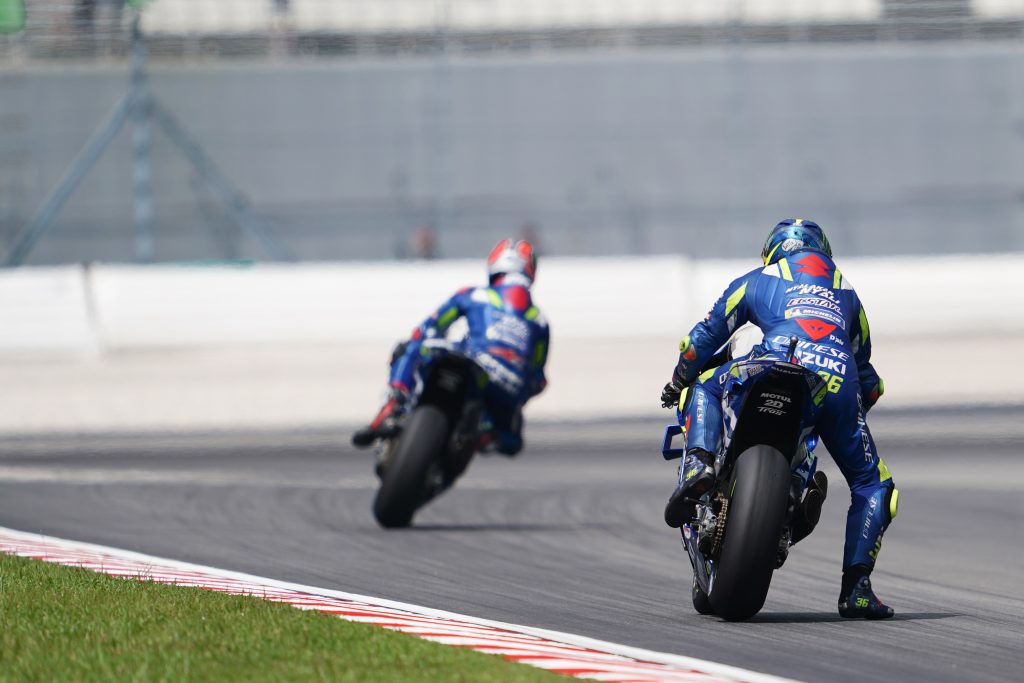
Back at the Sepang test, like his debutant peers, Mir was also lively. In the paddock once again and eight months on he smiles at the memory. “I remember in the test I was doing some bars of pressure on the front brake lever…and now I am using much higher pressure! I am braking much harder. In turning, I’m much more aggressive. [It’s] nothing comparable.”
Mir’s pace (seventh In Free Practice, fastest in warm-up) meant there was optimism all around the blue camp. “I think that we are doing a great job, the team also,” he said without hint of exaggeration. “We are improving, we are growing, and this is really good.”
Suzuki might feel vindicated on their gamble to recruit Mir; a personable youngster with a shiny CV but relatively few Grand Prix miles on the clock. His steep upward trajectory in MotoGP continues but perhaps his case stands just behind KTM in terms of the technical challenge. The GSX-RR’s idiosyncrasies means it is a GP-winning motorcycle but Suzuki lack the resources and data catchment compared to main rivals Honda, Yamaha and Ducati. Arguably the brand is already feeling the limitations of just having two bikes on the grid. The usefulness of Yamaha’s four-bike programme, that was confirmed to be upscaled in Sepang to enable Petronas Yamaha SRT to have the same spec as the Monster Energy works machinery in 2020, was one of the main aids in Fabio Quartararo’s ‘explosion’ this year. The 21 year old walked away with the Rookie of the Year gong, grasped six podiums and five pole positions – one of those in spectacular style at Sepang – and was Marc Marquez’s toughest race rival.
“He found a bike that – straight away – he was able to go fast with his style,” opines Mir. “In the case of Pecco, me, and Miguel also, we were struggling a little bit more because the bike is probably a bit more difficult to ride. It’s something you need to understand – how to ride the bike – and now we have to live through this moment, and [it] probably makes you stronger…But our moment will come for sure.”

In many senses the man of the moment is Quartararo who has over-delivered in 2019. Results, expectations and youthful verve have meant that the Petronas SRT pitbox has been a regular hive of celebration and jubilation. There have been scary tumbles in Silverstone and Phillip Island but the Frenchman did not register his first crash until round nine and is tied with Maverick Viñales the rider with the second-least get-offs prior to Valencia (Andrea Dovizioso is top with just four mishaps).
His Pole Position in Sepang at his team’s first home Grand Prix added more waves of hype. Despite the race being sponsored by major rival Shell, Petronas were omnipresent throughout the weekend and deepened their involvement in MotoGP further as a principal sponsor with a deal to become the official fuel supplier to Moto2 and Moto3 classes from 2020. Quartararo (and sophomore teammate Franco Morbidelli, who is still on a resolute trail of development himself) rightfully garnered the most attention on Friday and Saturday thanks to his lodging at the top of the time screens. #20’s inch-perfect flow on the M1 has become one of the defining sights of 2019 but, like Bagnaia and Mir, it was the skill of stopping that first came to mind on his reacquaintance with Sepang.
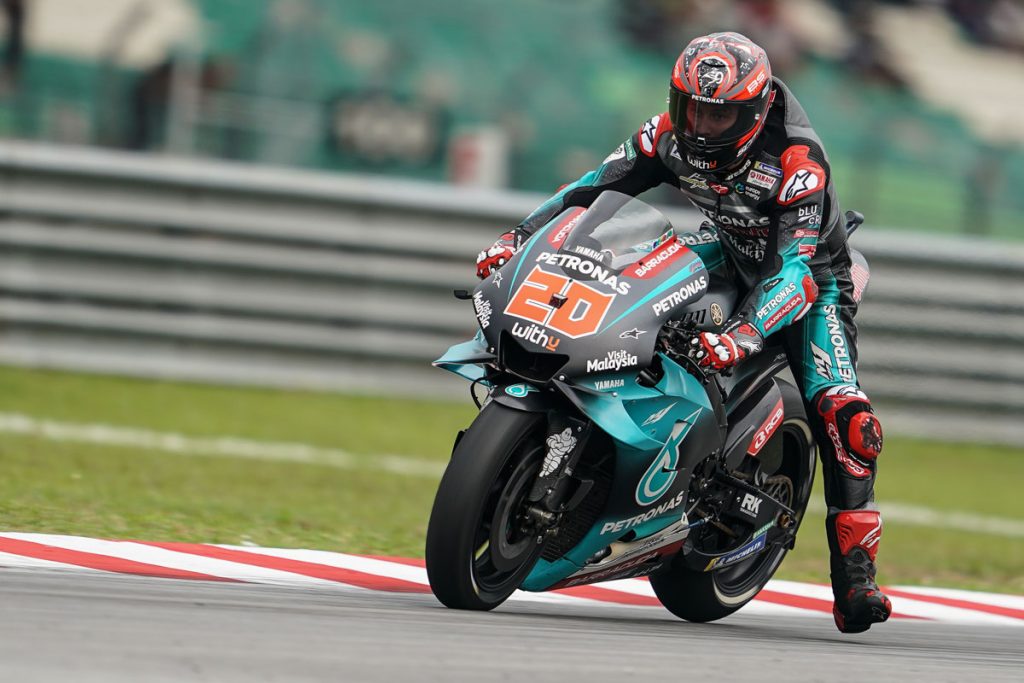
“The braking reference of February is totally different,” he stressed. “I brake twenty metres more [further]! So a big difference but that’s normal because February was the first test of 2019 and we are already seventeen GPs [on] and two in a row so all the riders are very strong after this. It is good to be back and to improve [the lap-time] by more than one second.” That one second made the difference. By the final day of the Sepang test he was 1.2 seconds away from Danilo Petrucci at the peak of the pile.
“In the test, in the corners, I was already quite fast. Today in the braking we know that corners 1, 4, 9, 14 and 15 is a lot of long braking. I think this is where I make the lap-time, but also the corner speed and exit. It is not just one point but all in general.”
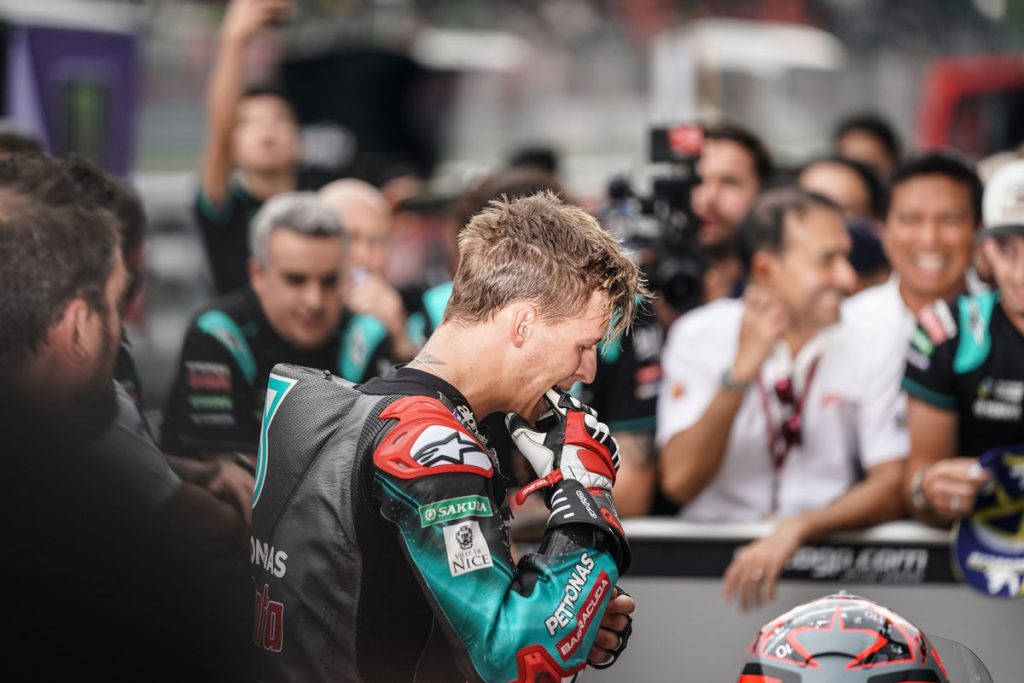
It is hard to think of few more effective man-motorcycle combinations this year than the Quartararo-Petronas M1 axis. His case is the opposite of the stricken Jorge Lorenzo at HRC. Quartararo has fought away arm-pump, subsequent surgery and ankle injury (although over-played by the crutches in Sepang it would seem) to still excel.
“I think we also need to be smooth with this bike but there is a balance between really smooth and aggressive,” he said, answering journalist Mat Oxley’s question as to the demands of the M1. “We need to find the right balance to suit the Yamaha and I think we did it. It is difficult to say [how] exactly. Every time I ride this bike it is harder to find the lap-time. In the beginning it was really – not easy – but to make a good lap-time it was OK. To be really fast is really difficult. You have to be aggressive but really smooth! If you are too aggressive you don’t make the lap-time. Too smooth then you have the lap but [it’s] not fast enough.”
His moments of melodrama tend to grate; banging the fuel tank when failing to make the fastest time in FP3 and the exuberance of his Pole Position celebration (not the best endorsement for quality of Scorpion helmets) indicating that his priorities still need to be honed for 2020. This can be true of his result on Sunday. A seventh position behind Morbidelli was deflating after all the promise accumulated during the Sepang weekend.
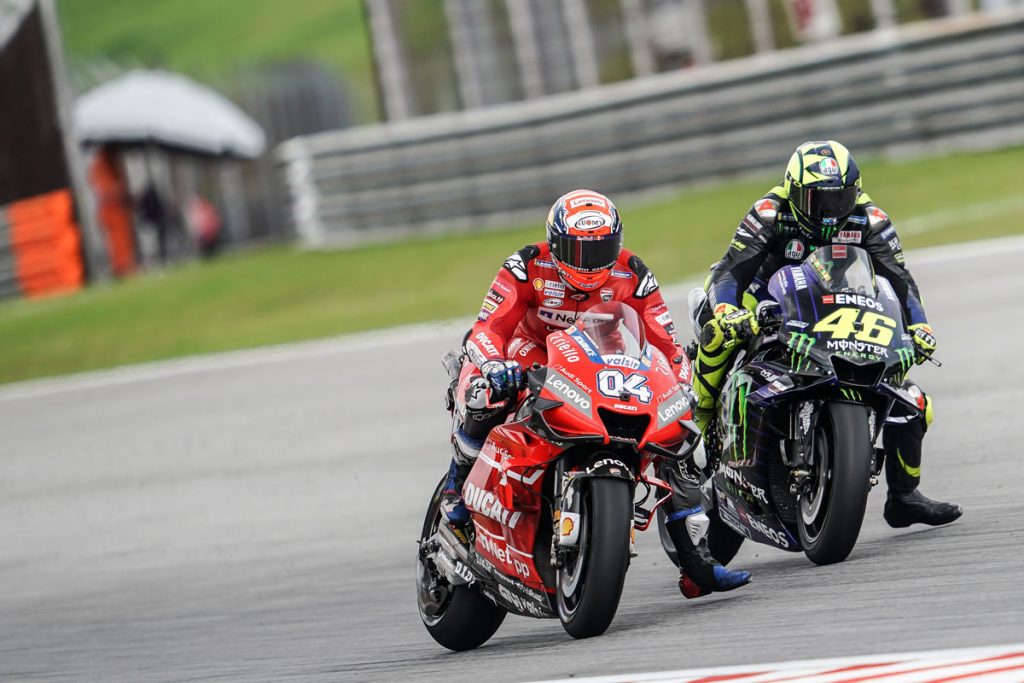
Although he allegedly has an updated spec of the M1 (the 2019 version used so brilliantly by Viñales almost thirteen seconds further down the road) Quartararo will have the same toolbox as the Spaniard for 2020, and will maintain a course to try and emulate some of the achievements of a brandmate old enough to be his father. Indeed the darling of the luminous yellow-flecked crowd (a two-time GP winner and ten-time podium finisher in his own rookie term in 2000) showed that awareness, adaptability, enthusiasm and self-preservation can go a long way. Rostrum contention and the fastest lap of the 2019 race at Sepang would indicate that Valentino Rossi is still an example for the generations to follow.

By Adam Wheeler @ontrackoffroad
Photos by CormacGP @cormacgp


